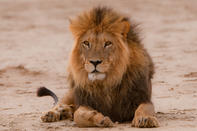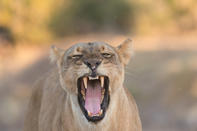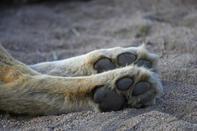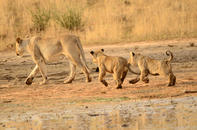Manes for Males
Mature male lions have huge manes of hair over their necks and shoulders.

This makes them look large and impressive to contenders and to females. When male lions fight they do so head-to-head, raking each other with their claws. A dense mane of hair serves to protect their necks from a fatal blow.
Tongue and Teeth

Lions have extremely rough tongues and can actually separate meat from bone by just licking it. As it is the criterion to belong to the carnivore family, lions have a well-developed carnassial shear. The carnassials are made up of the fourth upper premolar and first lower molar.
These teeth are laterally flattened and articulate against each other acting with a scissor-like blade action to cut meat and sinew.
The long sharp canines are used to grasp and kill prey and are useless in feeding. The strong lower jaw is powered by well-developed muscles that attach to the massive skull. A lion’s skull weighs over
3 kg.
Protractile Claws

Lions have protractile claws. The claws can be pushed out by muscle contractions when the lion has a need to fight or hunt but they relax back into a protective sheath when not in use which keeps them from becoming blunt while the cat moves around.
There is a small claw on a lion’s wrist which is higher than the rest and this is called a dewclaw. The dewclaw is used when pouncing on prey to secure it.
Lion 'Follow Me' Signs

Lions have black tips to their tails and black behind their ears. These are ‘follow me’ signs. The black tail is at exactly the right height for a cub to follow a female through tall grass.
Cats express their moods with their tails and ears and so having these areas highlighted is valuable for communication and coordination during hunts. While the black is obvious from behind, from the front they remain completely camouflaged.
By Megan Emmett